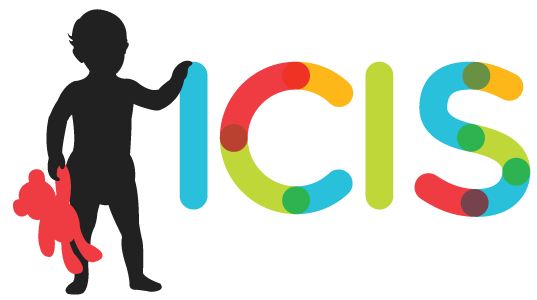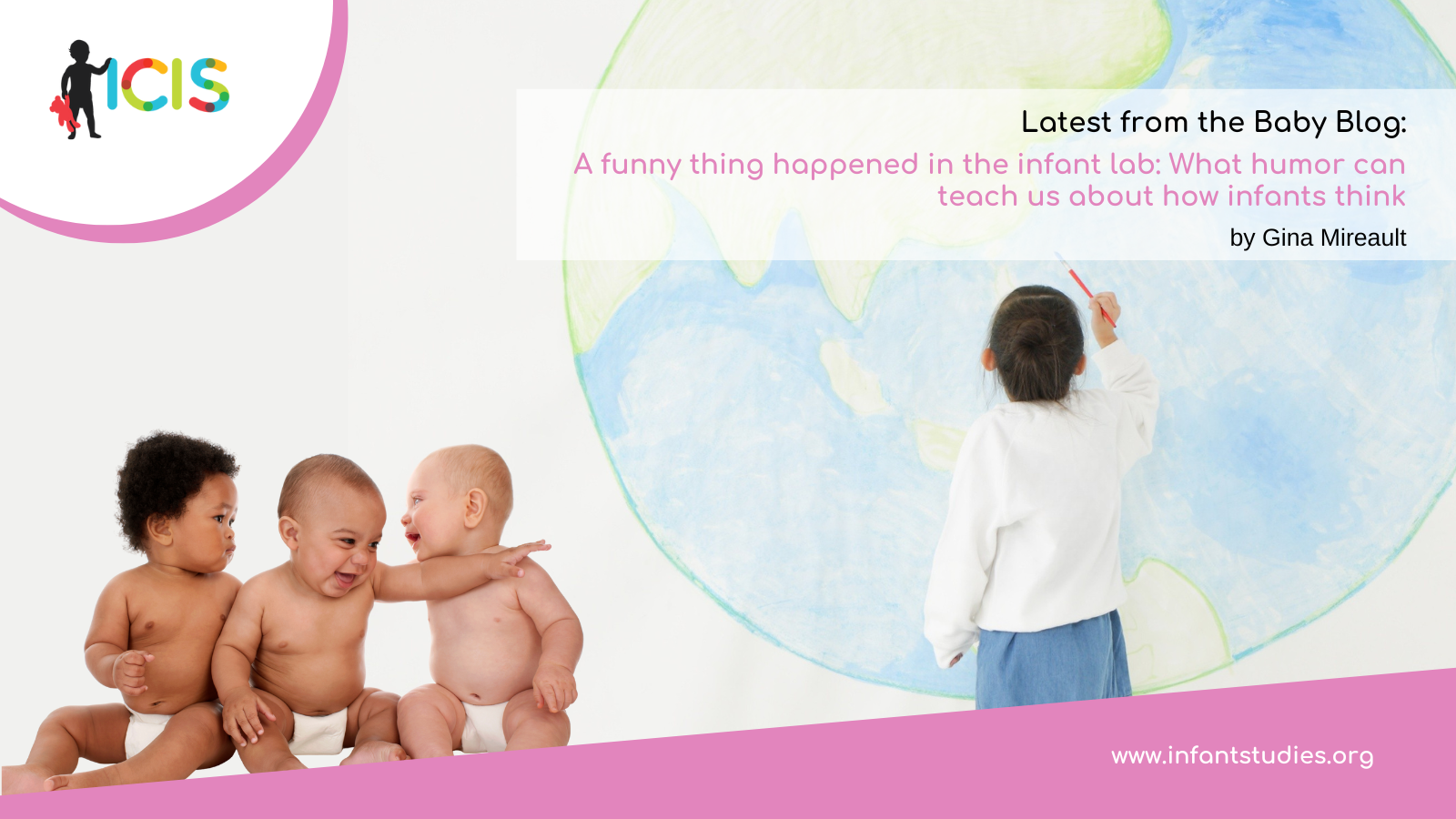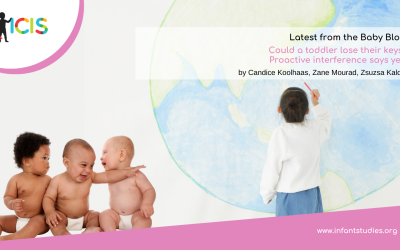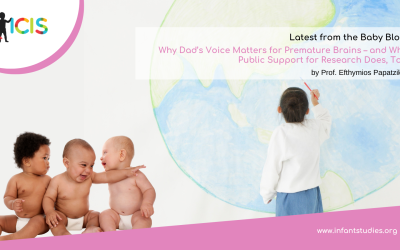Humor perception is widely considered to occur when a person is confronted with a benign but unexpected event – and incongruity – which they then resolve (Pien & Rothbart, 1976). In other words, they develop sudden insight into the incongruity so that it makes sense. Wearing a cup as a hat becomes funny when it is resolved as intentional; a face that reappears during Peekaboo becomes funny when it is resolved as having been hidden rather than truly gone. Additionally, the playful context signals the incongruity is not only interesting, but safe. These moments of insight are often marked by laughter indicating a little cognitive puzzle has been solved.
The scant literature on infants’ laughter toward incongruity is contrasted with another body of literature showing that infants consistently gaze at unexpected events (Margoni et al., 2024). In a recent study, we explored this intriguing question: why do infants laugh at some incongruities and gaze at others? Both kinds of incongruities share key qualities: they are novel, slightly surprising, and safe. The key differentiating feature may be that babies stare at incongruities that cannot be resolved (i.e., magic tricks) and laugh at those that can (i.e., jokes). Problematic to this idea however is that, although infants have been credited with all kinds of capacities, including for example, some knowledge of natural physical laws (e.g., solidity, gravity; Baillargeon, 2004), they have not been credited with the ability to resolve incongruities because that question has not been directly tested.
Importantly, studies that find infants stare at magical incongruities tend to present those events in nonsocial contexts in which objects act in odd ways, all on their own. On the other hand, studies that find infants laugh at humorous incongruities tend to present those events in social contexts where people behave in strange ways with objects. The latter events are also often repeated, potentially giving infants an opportunity to make sense of or resolve them. We set out to determine whether these features – social context and repetition – are what allow infants to make sense of unexpected incongruous events. In other words, would infants laugh at magic if given a chance to resolve it?
To do this, we took two magical incongruities used in the research: one in which a ball disappears by sleight of hand, and other in which a ball turns into a cube. We presented these incongruities to 6-month-old infants (N=88) in an nonsocial context where only the researcher’s hands were visible, or in a social context where infants could see the researcher “magician”. Importantly, the researcher did not look at, speak to, or interact with the infant and maintained a neutral downward gaze throughout. Each magical incongruity was paired with a corresponding control (i.e., ordinary) event, and both were presented 6 times allowing us to compare infants’ reactions to their first vs. repeated exposures to each event. We used a within-subjects design wherein all infants saw both magical incongruous events and their respective controls. Infants were randomized to one of four possible orders in which the event (control/incongruity) and social context (nonsocial/social) were counterbalanced, meaning that we systematically controlled for the order of events that infants saw. Infants were videoed while watching the events so that research assistants blind to the hypotheses could later code infants’ behavior which included looking, smiling/laughing, looks to the caregiver, and looks away. We also explored whether infants differentiated events based on reaching as recent work suggests this may shed additional insight on infants’ reactions to magical incongruity (Köster et al., 2020). Research assistants traveled to infants’ homes with a portable Blackbox theater allowing infants to be tested in their familiar environments and allowing us to capture their most natural reactions.
Importantly, and corroborating prior studies, infants looked more often at magical incongruous than ordinary events and were also more likely to reach toward the former suggesting an attempt to explore those events more closely, perhaps to make sense of them (Köster et al., 2020).
Crucially, when magical incongruities were placed in a social context, infants expanded their appraisal, initially smiling or laughing at them compared to ordinary events, and hinting at an early capacity for incongruity resolution. In contrast, those same events became uninteresting when repeated, especially in a nonsocial context, evoking neither gazing nor smiling and suggesting these events quickly lost their novelty perhaps as they became too predictable. Repetition alone, therefore, was insufficient to evoke amusement. It could be that repetition results in amusement only when embedded in a playful frame (e.g., chase games, peekaboo; Hoicka, 2014) where it predicts arousing social interaction even as novelty diminishes.
Infants have already been credited with differentiating impossible from possible events (Baillargeon et al., 2009; Margoni et al., 2024); the added value of these findings is to further credit them with being able to resolve those impossible events if given the context to do so. Social context may help infants make a different appraisal of magical incongruities as amusing, possibly because the simple presence of a person acting on the objects allows infants to infer the events as caused by that person (i.e., the magician), thereby resolving them (Reddy & Uithol, 2016). These findings require replication but suggest infants may be more sophisticated in their ability to appraise unexpected, highly unusual events when the context allows the opportunity.
This study shows that infants do more than passively watch incongruities—they actively engage with them, laughing at and reaching for them when the context affords it. Infants’ curiosity, humor, and social engagement toward and with novelty, suggests they treat surprising events not just as puzzles to watch, but as opportunities to explore and engage. Knowing this can shape how we think about supporting cognitive and social-emotional development in the earliest months of life, and in the most effortless, joyful ways.
Of particular relevance given today’s political climate, this work was supported by an NIH R16 (SuRE) grant. The R16 mechanism has two objectives. One is to produce meritorious research that contributes meaningfully to the field. The other is to provide science training opportunities to undergraduates at teaching-focused institutions, enabling them to participate directly in hands-on research, strengthening both the science and the scientific workforce. Federal investment in infant research is essential, not only because it advances our scientific understanding of how babies think, feel, and learn, but also because it provides training for the next generation of scientists. At a time when federal research funding faces heightened scrutiny, sustaining these programs is critical for ensuring that developmental science continues to thrive. Funding ensures that discoveries about the earliest months of life — and the students who will carry the field forward — are not left to chance.
References
Baillargeon, R. (2004). Infants’ physical world. Current Directions in Psychological Science,
13(3), 89-94. https://doi.org/10.1111/j.0963-7214.2004.00281.x
Baillargeon, R., Li, J., Ng, W., & Yuan, S. (2009). An account of infants’ physical reasoning. In A. Woodward & A. Needham (Eds.), Learning and the infant mind (pp. 66–116). Oxford University Press.
Hoicka, E. (2014). The pragmatic development of humor. In D. Matthews (Ed.), Pragmatic
development in first language acquisition (pp. 119–237). John Benjamins Publishing Company. https://doi.org/10.1075/tilar.10.13hoi
Köster, M., Kayhan, E., Langeloh, M., & Hoehl, S. (2020). Making sense of the world: Infant
learning from a predictive processing perspective. Perspectives on Psychological Science, 15(3), 562–571. https://doi.org/10.1177/1745691619895071
Margoni, F., Surian, L., & Baillargeon, R. (2024). The violation-of-expectation paradigm: A
conceptual overview. Psychological Review, 131, 716-748. https://doi.org/10.1037/rev0000450
Pien, D., & Rothbart, M. K. (1976). Incongruity and resolution in children’s humor: A
reexamination. Child Development, 47(4), 966–971. https://doi.org/10.2307/1128432
Reddy, V., & Uithol, S. (2016). Engagement: Looking beyond the mirror to understand action
understanding. British Journal of Developmental Psychology, 34, 101–114. https://doi.org/10.1111/bjdp.12106
About the Author

Gina Mireault
Vermont State University
Https://orcid.org/0000-0003-2037-4627
https://scholar.google.com/citations?user=mM3qKsAAAAAJ&hl=en




